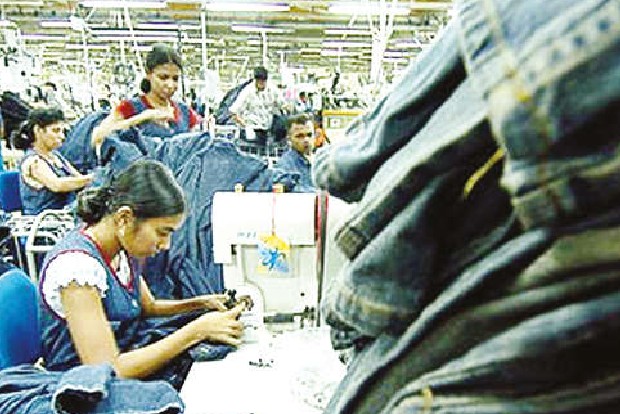Begin typing your search...
What’s the big deal about staying in vogue?
Cheaper prices and shorter fashion cycles mean shoppers are encouraged to keep buying more to stay in style. What does it mean for the planet? Human contribution to climate change often seems abstract and therefore easy to ignore.

Chennai
Rising sea levels, increasing temperatures and CO2 emissions, all feel a bit, well, distant. It’s a different story, however, with our clothes, because every time we get dressed in the morning, the human impacts of climate change touch the surface of our skin.
That’s because the textile industry has become one of the world’s worst polluters and drivers of climate change. Take denim jeans, a worldwide favourite. Making just a single pair requires up to 10,000 litres of water — that’s roughly enough to quench the thirst of an average adult for more than 13 years. The fashion industry is worse for the environment than aviation. Much worse. In 2018, air travel — both freight and passenger — accounted for up to 2.5% of global carbon dioxide (CO2) emissions. The fashion industry was responsible for four times that. Belching out pollution is one thing, but making clothes also sucks up finite resources — using around 93 billion cubic meters of water a year. Cotton, one of the industry’s favourite raw materials, is so thirsty it’s responsible for 2.6% of global water usage.
According to recent research, the textile industry has also become a major contributor to microplastic pollution. This is caused by synthetic textiles, such as polyester or nylon which shed tiny bits of plastic. These fibers — often too small to see with the naked eye — find their way into our oceans where they harm sealife by altering their feeding behavior, slowing appetites and blocking digestion. They also end up in our food and water. Researchers estimate that a single European consumer of shellfish eats up to 11,000 pieces of microplastic a year. It’s still unclear exactly how what damage this does to the human body. Whether your wardrobe is bursting or you just get a pair of socks for Christmas, over-production in the fashion industry has made clothing instantly available to consumers at prices that are not sustainable. Take UK fashion retailer Pretty Little Thing, which was selling a dress on its website for just $0.11 last year. Fast fashion is a business model that creates a sense of urgency to encourage impulse buying. This, in turn, fuels garment production. If population growth continues as predicted, some estimates suggest the global fashion industry could go from selling 62 million tons a year in 2017 to 102 million tons by 2030. As brands drive new trends by rotating their stocks of cheap clothes, shoppers are likely to buy more items they wear less frequently, creating a spiral to the bottom. Across much of the EU, household spending on clothing dropped between 1996 and 2012, though the number of garments EU citizens buy has risen by 40% over the past decades.
To date, the biggest markets for the sale of clothes are in China, the US and the EU. But with increasing economic development and population growth in Africa, India and South America, the demand and taste for a fast fashion lifestyle is expected to grow. True. And some designers are going all out to be environmentally friendly, but such products are not within everyone’s budget. For the tides to really turn, it will take a concerted effort on many fronts. If we can achieve that, the clothes we wear could cease to be just the latest fashion, but also become part of the climate change solution.
This article was provided by Deutsche Welle
Visit news.dtnext.in to explore our interactive epaper!
Download the DT Next app for more exciting features!
Click here for iOS
Click here for Android
Next Story



